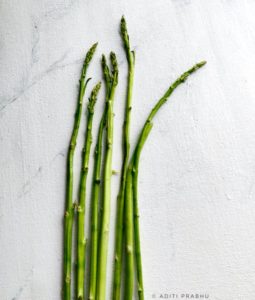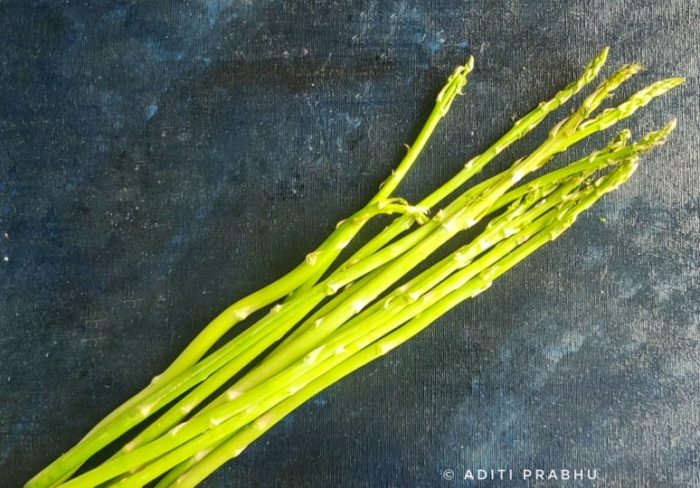Asparagus...
Finally, I got my hands on this amazing ingredient. I had always seen it on screen (mainly in Western cookery shows) or read in books. I knew how it felt, tasted, and looked from all the descriptions I had but that doesn’t really justify it, does it? There is something about looking, feeling, tasting, and cooking a food ingredient.
Asparagus is a perennial flowering plant that has been cultivated and harvested for centuries. Its young shoots are used as vegetables.

Scientific Name
Asparagus Officinalis
Local Names
Shatavar ( Hindi )
Sasur / Susar Muli ( Marathi)
Appearance
Asparagus has a long erect stalk that is tender and firm with scale-like leaves while the flowers are bell-shaped.
There are 3 varieties 1. Green 2. White 3.Purple
Taste
It has a distinct taste that is slightly hard to describe. It reminds me of broccoli, with a hint of earthy flavor.
Nutritional Facts
All varieties of asparagus are pretty much similar in their nutritional profile.
Overall, the nutrition benefits of asparagus are as follows:
- Nutrient-dense food.
- It is low in calories and sodium.
- It is a rich source of folic acid and is a good source of fiber, and vitamins B6, B12, A, C, and K.
- Good source of calcium, iron, magnesium, chromium, selenium, zinc, etc, and antioxidants too.
- It has diuretic properties.
Apart from this, it has many known medicinal properties.
How to buy?
It is not easily available locally but can easily be purchased online or from places like Food halls or some delivery portals in Mumbai.
While purchasing it ensure that the stalk looks fresh, and firm, and is not wilted or on the paler yellower side.
Also, make sure the spear or bud on top should be closed firmly.
How to clean?
- Always store it in bunches but cover the base with a damp towel or dunk it in a bit of water in a tall jar and cover the top with a towel/ plastic and keep it in the refrigerator.
- Easily lasts in the fridge for 5-6 days.
How to store?
- Wash it nicely.
- If you intend to cook it right away. Once you wash it, chop off the base tip. Then peel the stem if it is thick, if not (like the ones I had) just use them directly.
- A lot of articles would tell you to bend the base of the asparagus stalk wherever it breaks easily that’s the breaking point and so you discard the base. Personally, I feel that’s too much waste except if it is too firm to consume then discard it.
Culinary Uses
Some of the easiest ways to cook it are by steaming, blanching, grilling, or sauteing. Here are some examples:
- Salads
- Pan fried Asparagus
- Soups
- Side Dishes
What is your favorite way of consuming it? Any favorite recipes? Let me know in the comments below
Reference:
https://www.ncbi.nlm.nih.gov/pmc/articles/PMC7022954/
https://pdfs.semanticscholar.org/4546/a2694d359f48129aed70ac96c26ce0df7eaa.pdf
https://breeding.rutgers.edu/asparagus-research/
https://www.sciencedirect.com/science/article/pii/B9780128131718000068

1 Comment